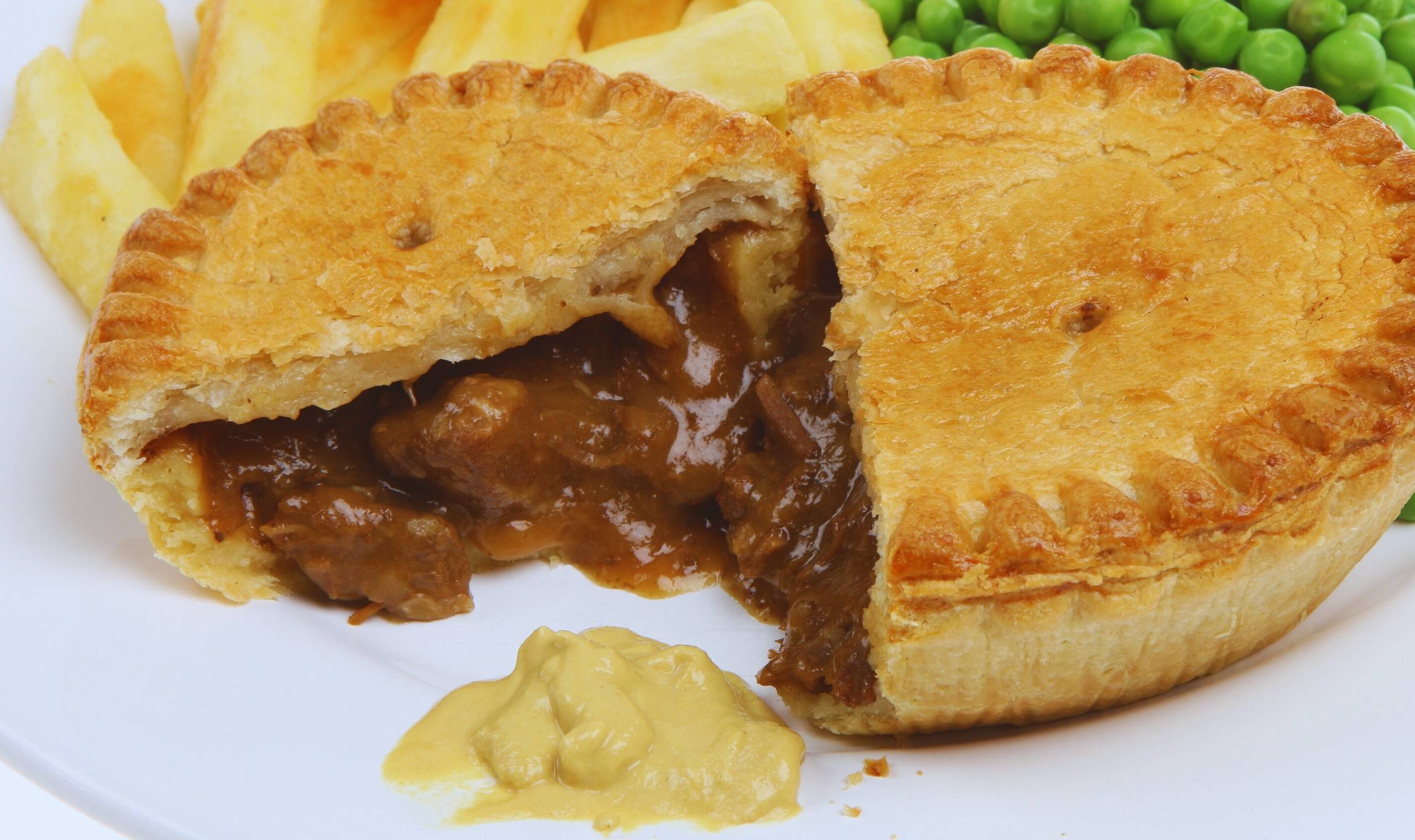Steak and Kidney Pie: A British Classic with Guts (Literally)
There are few dishes as unapologetically British as steak and kidney pie. It’s the culinary equivalent of a bowler hat—iconic, enduring, and a little bit quirky. While it might not win any beauty contests, this pie packs a punch where it counts: flavour. Beneath its golden pastry crust lies a treasure trove of tender steak, earthy kidney, and a rich, savoury gravy that could make even the most ardent pie sceptic swoon.
The Meat of the Matter: A Brief History
Steak and kidney pie has been gracing British tables since the 19th century, though its roots run even deeper into the nation’s love affair with hearty, comforting fare. Early iterations of the pie likely evolved from medieval meat pies, which were designed to be practical, portable, and deliciously satisfying. By the Victorian era, the combination of beef and kidney became a staple, celebrated for its robust flavour and nutrient-packed filling.
Kidneys, once a humble ingredient, were widely embraced for their affordability and availability. These days, they might not be everyone’s first choice, but in the context of this pie, they’re nothing short of essential. Their unique flavour adds depth to the filling, creating a dish that’s as rich in history as it is in taste.
Regional Takes on the Classic
Though steak and kidney pie is a quintessentially English creation, regional variations add a splash of local charm. In the North, you’re likely to find the pie served with a suet crust, a heartier alternative to puff or shortcrust pastry. Down south, the focus might shift to a lighter, more buttery pastry lid. Across the Midlands, some pies include a splash of ale or stout in the gravy, adding a boozy depth to the already savoury filling.
Scotland has its own take on meat pies, often swapping the kidney for other offal or leaving it out altogether. Wales, ever the innovator, might throw in a handful of leeks for a regional twist. Each version pays homage to the original while showcasing the diversity of British pie-making traditions.
A Pint, a Pie, and Perfect Pairings
Let’s talk drinks, because no steak and kidney pie is complete without the right liquid accompaniment. A pint of bitter or stout is the classic choice, its malty richness playing beautifully against the meaty filling. Prefer wine? A robust red, like a Cabernet Sauvignon or Shiraz, will hold its own against the pie’s bold flavours.
For teetotallers, a strong cup of tea—preferably Yorkshire or builder’s—cuts through the richness nicely. If you’re feeling fancy, a sparkling elderflower cordial offers a refreshing contrast. Whatever you choose, the goal is simple: something bold enough to stand up to the pie, but refreshing enough to cleanse the palate.
Steak and Kidney Pie: Plate Companions Worth Their Salt
Steak and kidney pie is a star, but even stars need a supporting cast. Mashed potatoes are the obvious choice—fluffy, buttery, and the perfect vehicle for that glorious gravy. A side of mushy peas, whether you love or loathe them, adds a touch of tradition and a pop of green.
For a lighter option, go for steamed greens like kale or cabbage with a drizzle of butter. And let’s not forget the pickles! A crisp gherkin or a dollop of piccalilli brings a tangy counterpoint to the richness of the pie. For something extra special, try pairing it with a celeriac mash or roasted root vegetables for a modern twist.
Why the Kidney Matters
Ah, the kidney. It’s the part of the pie that divides opinion faster than Marmite. But love it or hate it, there’s no denying the role it plays in creating the dish’s signature flavour. Kidneys bring a distinct, almost minerally earthiness to the filling, balancing out the sweetness of the onions and the richness of the steak.
If you’re on the fence, consider starting with a milder kidney, like veal or lamb, which have a subtler taste compared to beef kidney. And if you’re a fan of bold flavours, embrace the beef kidney in all its glory. Either way, it’s worth giving it a go—after all, it wouldn’t be steak and kidney pie without it.
Gravy Goals: The Secret Sauce
The gravy in a steak and kidney pie is nothing short of a masterpiece. Made with stock, onions, and often a splash of beer or Worcestershire sauce, it’s thickened to perfection and infused with layers of umami goodness. A touch of mustard or a dash of redcurrant jelly isn’t unheard of, adding complexity and a hint of sweetness to the mix.
Achieving the perfect gravy consistency is an art. It should be thick enough to hold everything together, but not so stodgy that it feels heavy. The goal is a glossy, flavour-packed sauce that coats the meat and oozes just enough when you cut into the pie.
Steak and Kidney Pie: The Recipe That Puts the Pie in Pioneer
Ingredients:
For the filling:
- 500g beef steak, diced
- 250g beef or lamb kidney, trimmed and diced
- 1 large onion, finely chopped
- 2 tbsp plain flour
- 500ml beef stock
- 1 tbsp Worcestershire sauce
- 1 tsp mustard (optional)
- Salt and pepper to taste
- 2 tbsp vegetable oil or dripping
For the pastry:
- 300g plain flour
- 150g unsalted butter, chilled and cubed
- Pinch of salt
- 1 egg, beaten (for glazing)
- A little cold water
Method:
Heat the oil in a large pan and brown the steak and kidney in batches. Remove and set aside. Add the onion to the pan and cook until softened. Stir in the flour and cook for a minute before gradually adding the stock, stirring constantly. Return the meat to the pan, add the Worcestershire sauce and mustard if using, and season with salt and pepper. Simmer gently for an hour, or until the meat is tender and the gravy has thickened. Allow to cool.
To make the pastry, rub the butter into the flour and salt until it resembles breadcrumbs. Add cold water, a tablespoon at a time, until the dough comes together. Wrap in cling film and chill for 30 minutes.
Preheat your oven to 200°C (180°C fan). Roll out two-thirds of the pastry and line a pie dish. Fill with the cooled meat mixture, then roll out the remaining pastry and place it on top. Seal the edges, crimping decoratively if you’re feeling fancy, and cut a small hole in the centre to let steam escape. Brush with beaten egg.
Bake for 30-35 minutes, or until the pastry is golden and crisp. Serve immediately with your chosen accompaniments and enjoy the kind of meal that warms you to your very core.



